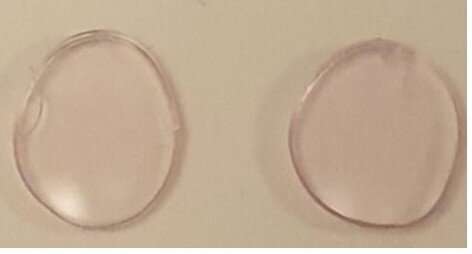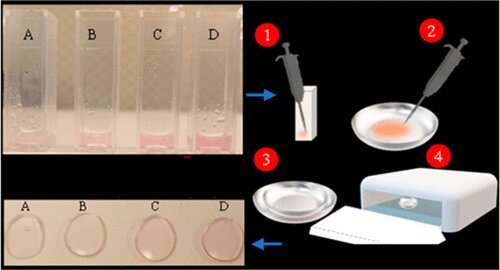Color blindness-correcting contact lenses

Imagine seeing the world in muted shades—gray sky, gray grass. Some people with color blindness see everything this way, though most can't see specific colors. Tinted glasses can help, but they can't be used to correct blurry vision. And dyed contact lenses currently in development for the condition are potentially harmful and unstable. Now, in ACS Nano, researchers report infusing contact lenses with gold nanoparticles to create a safer way to see colors.
Some daily activities, such as determining if a banana is ripe, selecting matching clothes or stopping at a red light, can be difficult for those with color blindness. Most people with this genetic disorder have trouble discriminating red and green shades, and red-tinted glasses can make those colors more prominent and easier to see. However, these lenses are bulky and the lens material cannot be made to fix vision problems. Thus, researchers have shifted to the development of special tinted contact lenses. Although the prototype hot-pink dyed lenses improved red-green color perception in clinical trials, they leached dye, which led to concerns about their safety. Gold nanocomposites are nontoxic and have been used for centuries to produce "cranberry glass" because of the way they scatter light. So, Ahmed Salih, Haider Butt and colleagues wanted to see whether incorporating gold nanoparticles into contact lens material instead of dye could improve red-green contrast safely and effectively.
To make the contact lenses, the researchers evenly mixed gold nanoparticles into a hydrogel polymer, producing rose-tinted gels that filtered light within 520-580 nm, the wavelengths where red and green overlap. The most effective contact lenses were those with 40 nm-wide gold nanoparticles, because in tests, these particles did not clump or filter more color than necessary. In addition, these lenses had water-retention properties similar to those of commercial ones and were not toxic to cells growing in petri dishes in the lab. Finally, the researchers directly compared their new material to two commercially available pairs of tinted glasses, and their previously developed hot-pink dyed contact lens. The gold nanocomposite lenses were more selective in the wavelengths they blocked than the glasses. The new lenses matched the wavelength range of the dyed contact lenses, suggesting the gold nanocomposite ones would be suitable for people with red-green color issues without the potential safety concerns. The researchers say that the next step is to conduct clinical trials with human patients to assess comfort.

More information: Ahmed E. Salih et al. Gold Nanocomposite Contact Lenses for Color Blindness Management, ACS Nano (2021). DOI: 10.1021/acsnano.0c09657
Journal information: ACS Nano
Provided by American Chemical Society




















